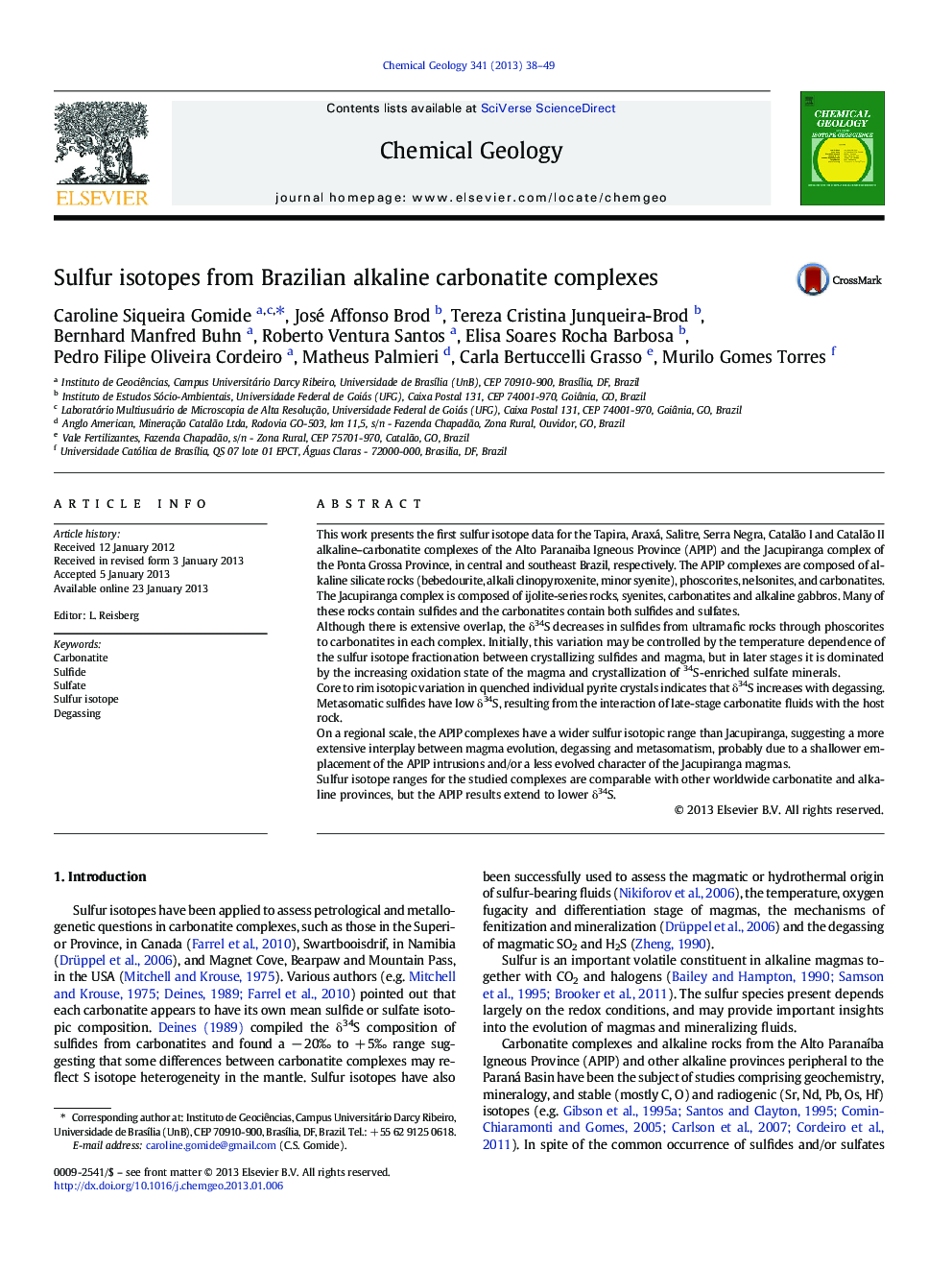| کد مقاله | کد نشریه | سال انتشار | مقاله انگلیسی | نسخه تمام متن |
|---|---|---|---|---|
| 4699041 | 1637627 | 2013 | 12 صفحه PDF | دانلود رایگان |
This work presents the first sulfur isotope data for the Tapira, Araxá, Salitre, Serra Negra, Catalão I and Catalão II alkaline–carbonatite complexes of the Alto Paranaiba Igneous Province (APIP) and the Jacupiranga complex of the Ponta Grossa Province, in central and southeast Brazil, respectively. The APIP complexes are composed of alkaline silicate rocks (bebedourite, alkali clinopyroxenite, minor syenite), phoscorites, nelsonites, and carbonatites. The Jacupiranga complex is composed of ijolite-series rocks, syenites, carbonatites and alkaline gabbros. Many of these rocks contain sulfides and the carbonatites contain both sulfides and sulfates.Although there is extensive overlap, the δ34S decreases in sulfides from ultramafic rocks through phoscorites to carbonatites in each complex. Initially, this variation may be controlled by the temperature dependence of the sulfur isotope fractionation between crystallizing sulfides and magma, but in later stages it is dominated by the increasing oxidation state of the magma and crystallization of 34S-enriched sulfate minerals.Core to rim isotopic variation in quenched individual pyrite crystals indicates that δ34S increases with degassing. Metasomatic sulfides have low δ34S, resulting from the interaction of late-stage carbonatite fluids with the host rock.On a regional scale, the APIP complexes have a wider sulfur isotopic range than Jacupiranga, suggesting a more extensive interplay between magma evolution, degassing and metasomatism, probably due to a shallower emplacement of the APIP intrusions and/or a less evolved character of the Jacupiranga magmas.Sulfur isotope ranges for the studied complexes are comparable with other worldwide carbonatite and alkaline provinces, but the APIP results extend to lower δ34S.
► We report the first S isotope results from Brazilian alkaline–carbonatite complexes.
► δ34S decreases in sulfides from ultramafic rocks to carbonatites in each complex.
► Redox state and sulfate formation play a major role in δ34S decrease in sulfides.
► Sulfur degassing has the opposite effect, driving δ34S to increase in sulfides.
► δ34S in Brazilian carbonatite complexes is comparable to worldwide occurrences.
Journal: Chemical Geology - Volume 341, 11 March 2013, Pages 38–49
